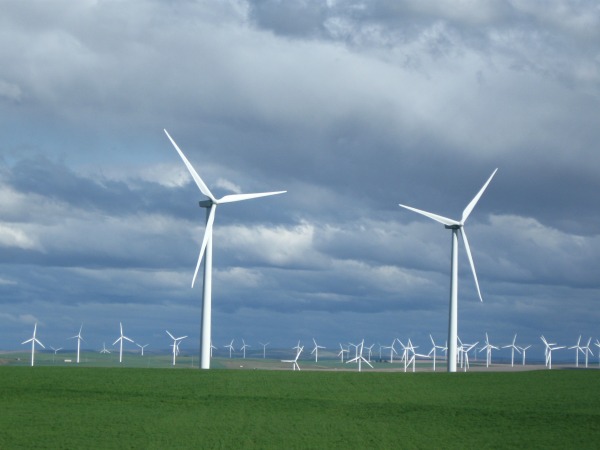
Energy Facilities
Before a large energy facility is built in Oregon, the developer must
apply for a site certificate from the Energy Facility Siting Council. The types of energy facilities subject to Council jurisdiction are defined in
Oregon Revised Statute 469.300. Some types of energy facilities that would otherwise need a site certificate are
exempt from Council jurisdiction (Listed under Status column).
The following types of energy facilities must have a site certificate from the Council before construction:
- Electric power plants with a nominal electric generating capacity (see below) of 25 megawatts or more from thermal power, a combustion turbine power plant or a solar thermal power plant.
- Electric power plants with an average electric generating capacity (see below) of 50 megawatts or more if the power is produced from geothermal or wind energy at a single energy facility or within a single energy generation area.
- A solar photovoltaic power generation facility using more than:
- 240 acres located on high-value farmland as defined in ORS 195.300;
2,560 acres (4
square miles) located on land that is predominantly cultivated or that, if not cultivated, is predominantly composed of soils that are in capability classes I to IV, as specified by the National Cooperative Soil Survey operated by the Natural Resources Conservation Service of the United States Department of Agriculture; or
- 3,840 acres (6 square miles) located on any other land.
- Transmission lines of 230 kilovolts or more that are more than 10 miles in length and that are to be constructed in more than one city or county in the state.
- Surface facilities associated with underground natural gas storage facilities with capacity greater than 50 million cubic feet per day.
- Liquid fuel pipelines that are 6 inches or larger in diameter and 5 miles or more in length.
- Liquefied natural gas storage facilities with capacity of 70,000 gallons or more.
- Intrastate natural gas pipelines that are 16 inches or more in diameter and 5 miles or more in length.
- Synthetic fuel plants that produce gas, liquid or solid fuel capable of being burned to produce the equivalent of 2 billion Btu of heat per day (except plants that use biomass as the raw material).
- Plants that convert biomass to gas, liquid or solid fuel products if any one of such products is capable of being burned to produce the equivalent of 6 billion Btu of heat per day.
- Small generating plants within an energy generation area, as described in OAR 345-001-0200, if the accumulated effects of development are similar to a single plant with an average electric generating capacity (see below) of 35 megawatts or more.
- Radioactive waste disposal sites and nuclear installations.
Definitions
Nominal electric generating capacity means the maximum net electric power output of an energy facility based on the average temperature, barometric pressure and relative humidity at the site during the times of the year when the facility is intended to operate.
Average electric generating capacity means the peak generating capacity of the facility divided by one of the following factors: - For wind or solar energy facilities, 3.00
- For geothermal energy facilities, 1.11
- For all other energy facilities, 1.00
Standby Generators
SenateBill 1525 (2024) adjusted statute to allow standby generators over 25
megawatts to connect to the grid to provide emergency dispatchable power
without obtaining a site certificate from the Energy Facility Siting Council.
In the bill, public utilities are required to report to ODOE on the operation
of such generators each year. Submitted reports are available below.